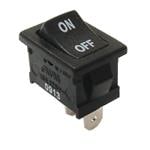 Quantum Tech
Quantum Tech
The quantum sniffer dog
As humans, we sniff out different scents and aromas using chemical receptors in our noses. In technological gas detection, however, there are a whole host of other methods available. One such method is to use infrared lasers, passing a laser beam through the gas to an adjacent separate detector, which measures the degree of light attenuation it causes.
Quantum liquid on crystal surface inspires future electronics
For the first time, an experiment has directly imaged electron orbits in a high-magnetic field, illuminating an unusual collective behaviour in electrons and suggesting new ways of manipulating the charged particles. The study, conducted by researchers at Princeton University and the University of Texas-Austin was published in the journal Science.
Class of materials could realise quantum computers
Scientists at EPFL and PSI have discovered a new class of materials that can prove ideal for the implementation of spintronics. Electron spin generally refers to the rotation of electrons around their axis. In a material electrons also orbit the atom's nucleus. When these two electron motions, spin and orbit interact, they locally produce a very strong magnetic field. As such, spin is used in MRI, NMR spectroscopy, and hard drives.
3D wiring technique could make quantum computers possible
Researchers from the Institute for Quantum Computing (IQC) at the University of Waterloo led the development of a new extensible wiring technique capable of controlling superconducting quantum bits, representing a significant step towards to the realization of a scalable quantum computer.
Effective reflection of light for quantum technology
Researchers at the Niels Bohr Institute, Copenhagen, Denmark, have announced the development of a method for ultra-effective reflection of light at an atomic scale. Light usually spreads out in all directions and when the light hits an object, it is reflected and is scattered even more. So light is normally quite uncontrollable. But researchers want to be able to control light all the way down to the atomic level in order to develop future q...
Quantum-dot solar windows evolve with spreading
In a paper for the journal Nature Energy, a Los Alamos National Laboratory research team demonstrates an important step in taking quantum dot, solar-powered windows from the laboratory to the construction site by proving that the technology can be scaled up from palm-sized demonstration models to windows large enough to put in and power a building.
Research area could lead to super-fast quantum computers
Research that was recognised with the Nobel Prize in Physics this week has spawned an entirely new research area that could lead to super-fast quantum computers. “It’s great that the prize goes toward a field that represents basic research but also is on the verge of many exciting possibilities, says Oscar Tjernber, professor of material physics at KTH Royal Institute of Technology.
First quantum photonic circuit with light source
Whether for use in safe data encryption, ultrafast calculation of huge data volumes or so-called quantum simulation of highly complex systems: Optical quantum computers are a source of hope for tomorrow's computer technology. For the first time, scientists now have succeeded in placing a complete quantum optical structure on a chip, as outlined Nature Photonics. This fulfills one condition for the use of photonic circuits in optical quantum compu...
A step closer to quantum computing
Physicists at the Australian National University (ANU) have brought quantum computing a step closer to reality by stopping light in a new experiment. Lead researcher Jesse Everett said controlling the movement of light was critical to developing future quantum computers, which could solve problems too complex for today's most advanced computers.
Quantum 2.0 could revolutionise computing and communications
“The potential impact of Quantum technology is absolutely profound,” said Professor Neil Stansfield, Head of Excellence for Technology Innovation at the Defence Science and Technology Laboratory, at last week’s CW (Cambridge Wireless) Technology and Engineering Conference (CW TEC) 2016.







